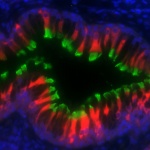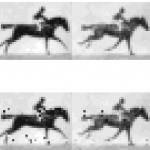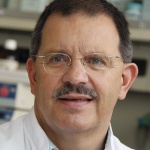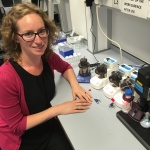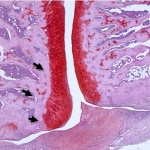
News • No more joint replacement?
Small molecule could make a big difference for arthritis patients
Will there come a time when a patient with arthritis can forgo joint replacement surgery in favor of a shot? Keck School of Medicine of USC scientist Denis Evseenko, MD, PhD, has reason to be optimistic. In a new publication in the Annals of Rheumatic Diseases, Evseenko’s team describes the promise of a new molecule aptly named “Regulator of Cartilage Growth and Differentiation,” or RCGD…



